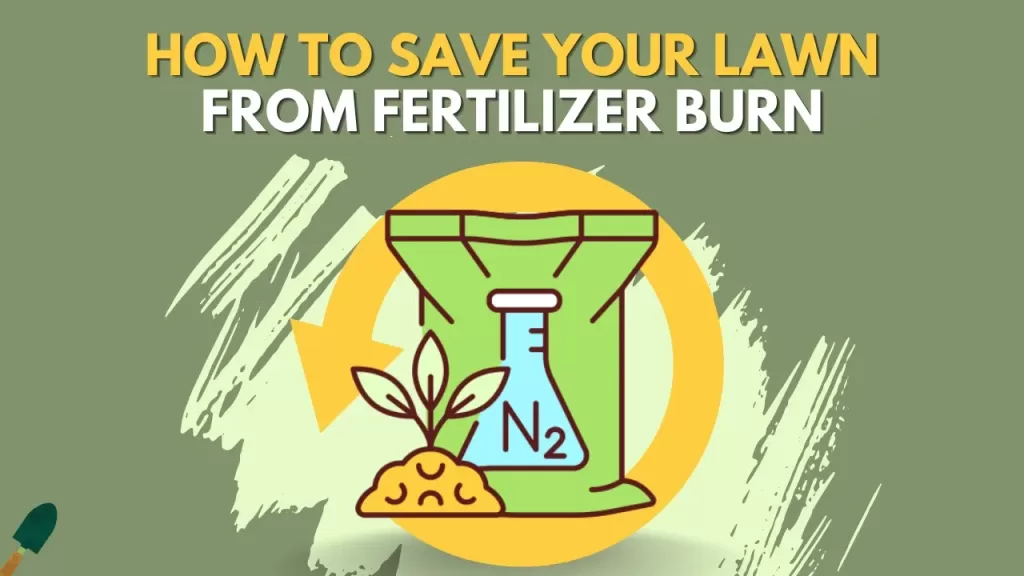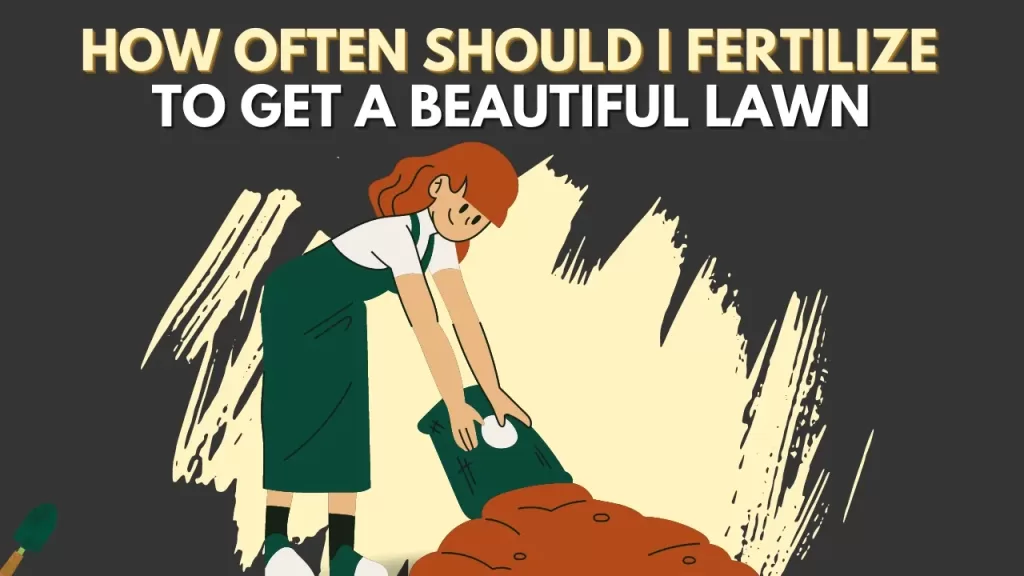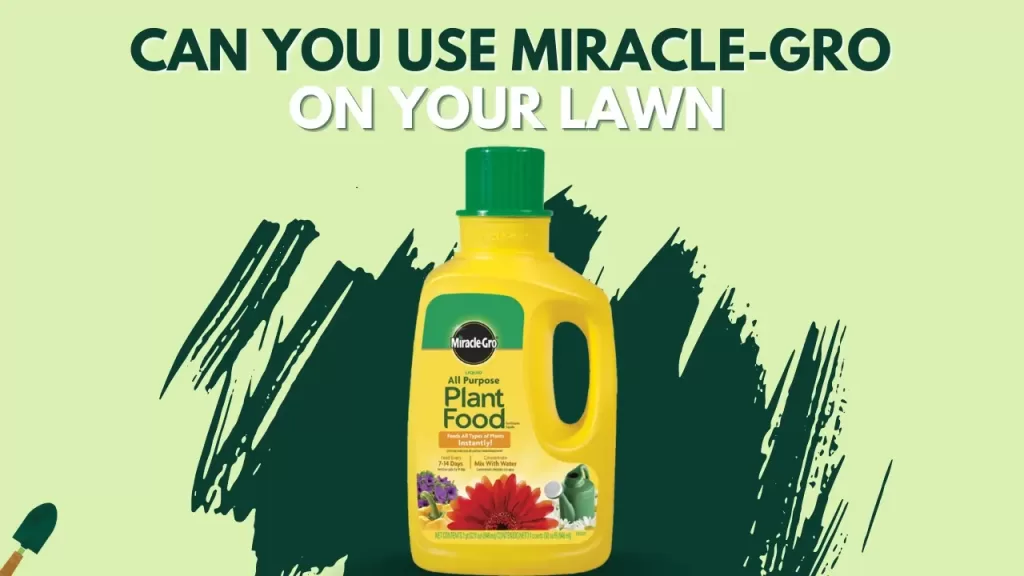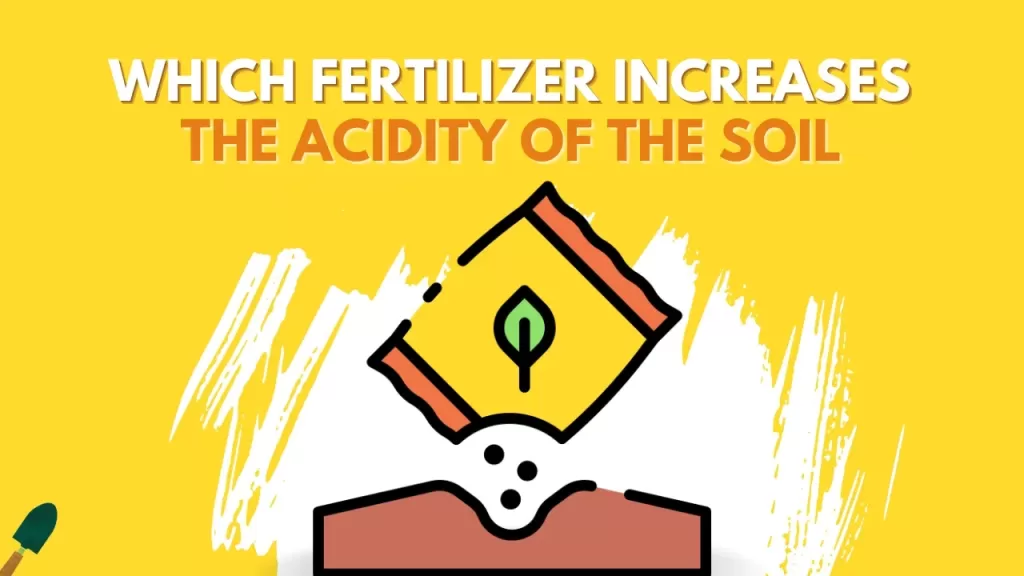We all believe and think that fertilizer is very essential for our lawns. It is called food for our lawn as it contains essential nutrients that keep turf healthy, thick, and green.
But like with anything, too much of a good thing can become a bad thing. And this is also the case for fertilizers. As too much fertilizer can burn the lawn and make it look ugly.
If you see yellow or brown spots in your lawn after fertilization, then there is a certain chance that you have over-fertilized your lawn.
To reverse lawn fertilization burn, you need to water thoroughly your lawn or the area where the concentration of the fertilizer is high to reduce the concentration of the fertilizer. Do generous watering in your lawn for a week to remove all the fertilizer.
Now you know how to reverse over-fertilization, but why does fertilizer burn your lawn, what are the symptoms that you can identify early, and how can you prevent your lawn from over-fertilization in the first place? Let’s talk about these things in detail.

What is fertilizer burn?
Most fertilizers have a mix of nitrogen (N),
phosphorus (P), and potassium (K), which are all essential nutrients to help the grass to grow and become thick and green. These fertilizers contain soluble salts to help your lawn more but this is where most of the risk comes in.
When you apply too much fertilizer or accidentally spill some over your lawn, the salt in the fertilizer builds up over the soil and causes what we call fertilizer burn.
Excessive nitrogen from the fertilizer also damages the roots of the grass and burns your lawn and you start to see the grass turning yellow and then brown.
Fertilizer burn often happens with quick-release fertilizers as it releases all the nutrients very fast and makes high concentrations in the soil.
With slow-release, fertilizer there is little chance to burn your lawn as it releases the nutrients slowly and steadily so there is never a time when the concentration of the nutrients becomes high in the soil.
Symptoms of fertilizer burn
Oftentimes you will see fertilizer burn symptoms in a day or two, sometimes it can take up to a week to see some symptoms of fertilizer burn.
Symptoms of these fertilizer burns include yellow spots, brown spots, and grass dying in patches. These symptoms can appear in a pattern in which you apply the fertilizer to your lawn.
There are other symptoms that you can look for to see if your lawn has fertilizer burn or not.
- Leaf scorch due to excess nitrogen slats in the soil
- The top surface of the soil is covered with a crust of fertilizer
- Blackened or limp roots of the grass
- Grass pulling out easily without any efforts
- Grass stops growing after fertilization
How to revive a fertilizer-burned lawn?
If the lawn has fertilizer burn, the first thing I do is to water my lawn generously first to dilute all the fertilizer from the soil and reduce the concentration.
If you are seeing yellow spots after fertilization then water the lawn thoroughly first and then take other necessary steps.
Soak your lawn daily for a week to reduce all the concentrations of the fertilizer.
Keep in mind to not allow water to run off, as it will be contaminated with chemicals and can be toxic. This toxic runoff can go to nearby places and can mix into waterways which can create damage to the environment. Try to water the lawn slowly, so the soil can soak all the water.
Check your lawn after a week to see if it’s recovering or not. If it’s recovering then you will see the grass turning from yellow or brown to green again. If it’s not recovering then you will see all the grass on the lawn turning brown.
If your lawn is not recovering then you need to dig up your lawn remove all the dead grass and reseed it or plant new sod.
How to avoid fertilizer burn?
Fertilizer burn can destroy your lawn and make it look ugly, and can take a lot of effort to rebuild it. But the good news is you can prevent fertilizer burn. Here are some things to prevent your lawn from fertilizer burn:
- Try to apply a slow-release fertilizer to your lawn as it reduces the chance of fertilizer burn by releasing the salts into the soil slowly and continuously rather than throwing all the nutrients at once and burning it.
- Fertilize the lawn according to its need. To determine how much fertilizer your lawn needs, test the soil first to know what nutrients it already has and what it needs to be a healthy lawn. Then choose the fertilizer and the quantity according to the test.
- Fertilizing your lawn with compost eliminates any chances of fertilizer burn. So fertilize your lawn with 1 to 2 inches of compost twice a year. This is a very organic and effective way to fertilize your lawn without harming it.
- Don’t fertilize your lawn during a drought period as it will make the fertilizer more concentrated in the soil due to lack of irrigation. Wait for the conditions to become moist or irrigate your soil thoroughly first.
- There is a difference between moist soil and wet lawn. If you fertilize a wet lawn then the fertilizer can stick to the leaves and burn them down because of the chemicals. So try to fertilize your lawn when the plants or grass is dry and water the lawn thoroughly afterwards to rinse off all the fertilizer from the leaves.
Will slow-release fertilizer burn lawn?
It is rare when slow-release fertilizer burns lawn. The main benefit of slow-release fertilizer is that it doesn’t dump all the nutrients at once, but provides them gradually into the soil. So the answer will be no, slow-release fertilizer doesn’t burn the lawn.
How to fix too much nitrogen on a lawn?
The process for fixing too much nitrogen and too much fertilizer is the same. You need to water your lawn thoroughly to wash out excess nitrogen and salts. Do this watering for 3-4 days to wash out the nitrogen.
Will grass grow back after fertilizer burns?
Shortly after the fertilizer burn, the grass starts to turn yellowish in colour and then slowly becomes brown. If you have water your lawn properly after over-fertilization, the chances are that the grass will recover by itself. But if the concentration of the fertilizer remains high in the soil, the grass will die and won’t come back to life. You need to remove the dead grass and reseed the area.
HOPE YOU HAVE FOUND ALL THE ANSWERS TO MAKE YOUR LAWN THICK AND BEAUTIFUL AGAIN.




